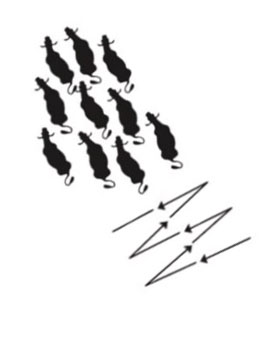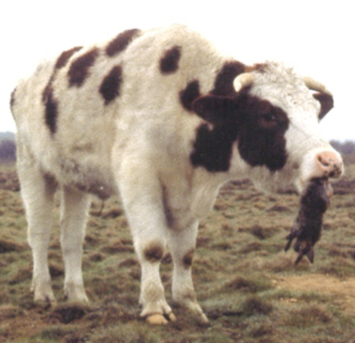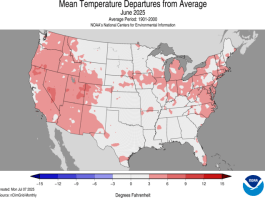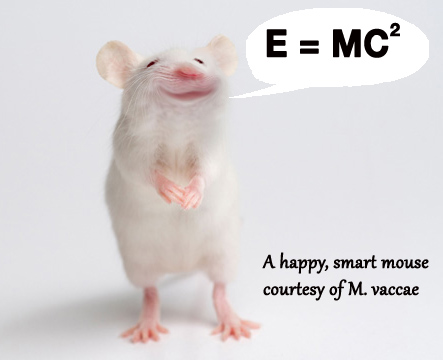
Here’s another in Whit Hibbard’s series on Low-Stress Livestock Handling. Earlier this year Tom Krawiec wrote about how he used these techniques to save his ranch $2400. Whit is following up with the information you need to build your own skills. Check out our Special Collection of Whit’s articles to see everything in the series.
So far we’ve looked at how to properly approach, start and drive a herd of cattle to create and maintain “good movement,” which is when the animals willingly go where we want and at a pace that is comfortable for them. In the last article we looked at speeding a herd up and slowing it down and some things to avoid – those things that interfere with good movement.
Now we need to look at guiding that movement. Good turns are very important, but how many of us think of that? I sure didn’t. And I certainly didn’t know there was more than one way to turn a herd. I thought there was only one way, and that was to ride up to the lead and shove them over, which is fine as long as we have good movement. If we don’t have good movement we might slow or stop the herd which is very detrimental to our goal of driving our animals somewhere.
What often happens is instead of making nice smooth turns, we make turns that are too tight. This jams cattle together which they don’t like. It can also turn some cattle diagonal which impedes good movement, and it separates cows and calves (and we all know what that leads to).
“When driving livestock, you want to make good turns. If you don’t make good turns, you will have problems.”
Bud Williams
So lets look at a few ways to turn a herd of cattle besides pushing the lead over. There are ways to turn a herd of cattle from the rear, which are novel to most people but important to know, especially if you’re working by yourself.
We’ve learned that if we drive cattle from the rear with the straight-lined zigzag, they will generally move away straight at a 90° angle to the baseline of our zigzag.

Therefore, we can change the direction of the herd by changing the angle of the baseline. For example, if a handler is driving these cattle (and it doesn’t matter the number if it’s 1 or 1,000) and wants to turn left, he shifts his zigzag as depicted. In other words, he shifts the baseline of his zigzag 90° to the direction he wants to go.
 The reason this works is because as the handler shifts to the right and changes his angle, he releases pressure on the left side of the heard so it slows down. He simultaneously increases pressure on the right side of the herd, so it speeds up and bends around the slower moving inside animals.
The reason this works is because as the handler shifts to the right and changes his angle, he releases pressure on the left side of the heard so it slows down. He simultaneously increases pressure on the right side of the herd, so it speeds up and bends around the slower moving inside animals.
If there’s more than one handler – lets say two – and you’re driving a herd straight ahead (3) and want to turn left, the person on the left backs off a little to release pressure while the person on the right continues to pressure (4), or pressures a little harder depending on how fast or sharp a turn you need to make. This works for the same reason articulated above: The faster moving right side of the herd bends around the slower moving left side.

 A third way to turn a herd from the rear is to walk or ride straight out to the side at a 90° angle to the direction of travel as in Figure 5. This applies enough pressure on the lead animals to turn them in the opposite direction. Who would ever guess that riding away from animals will turn them in the opposite direction from you. It took the genius of Bud Williams to figure that out.
A third way to turn a herd from the rear is to walk or ride straight out to the side at a 90° angle to the direction of travel as in Figure 5. This applies enough pressure on the lead animals to turn them in the opposite direction. Who would ever guess that riding away from animals will turn them in the opposite direction from you. It took the genius of Bud Williams to figure that out.
Ever the doubting Thomas, it took me years before I got up enough gumption to try it, but one day I was driving about 500 yearlings by myself on a four wheeler. I needed to turn to the left so I thought, “I wonder if that thing Bud talked about – turning by going straight out to the side – will work?” So, I picked a fence post about 200 yards away and started driving my four wheeler towards it. To my amazement, the lead turned just where I wanted them to. So now I do it all the time. For example, notice how in the illustration below I turn the cattle to the right after they go through the gate by riding straight out to the left.
There are two important things to keep in mind when turning cattle in this manner. First, you must go out to the side in a straight line, perpendicular to the direction of travel. What most people do is curve, and animals don’t like that because it’s predatorial. The reason people curve, Williams noted, is because as the herd moves ahead, the handler subconsciously wants to maintain the same distance, hence he curves to keep up. So, to keep from curving, Williams recommended people pick an object in the distance and walk or ride directly toward to it.
Second, you might find that you have to go way out to the side, much farther than you’d ever think. How- ever, I’ve noticed over time cattle learn what this movement means (turn in the opposite direction), so, with experience, you don’t have to go out very far before they turn.
If for some reason they don’t turn, I’d switch back to the first technique.
Although these turning techniques might be new to you, try them. Used in a low-pressure situation will allow you to get comfortable with them. If done properly, they work.




